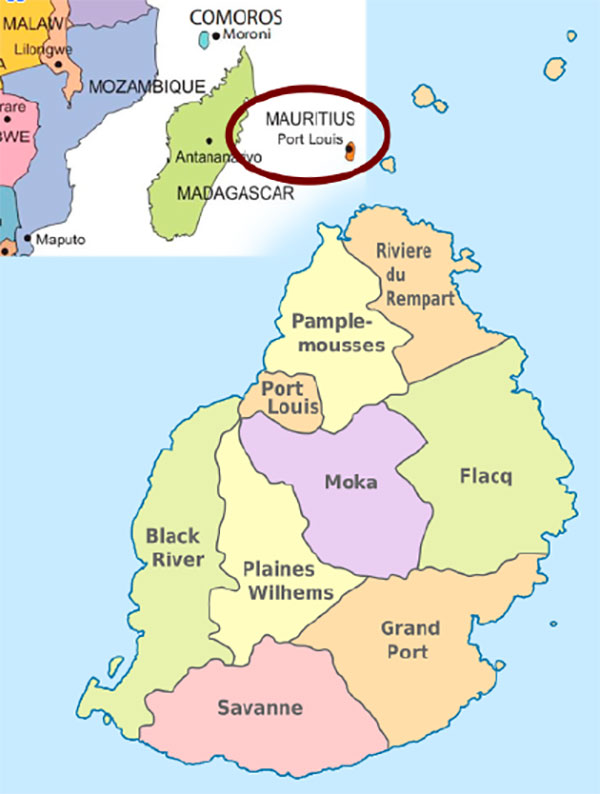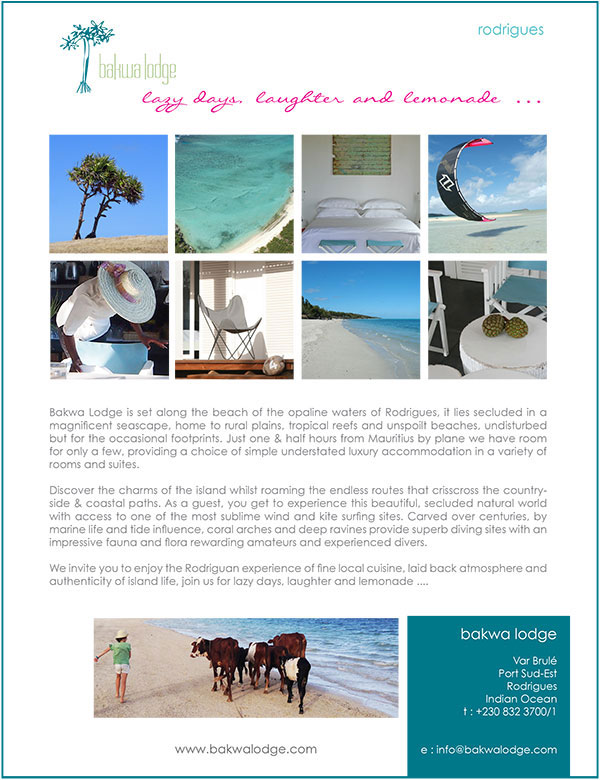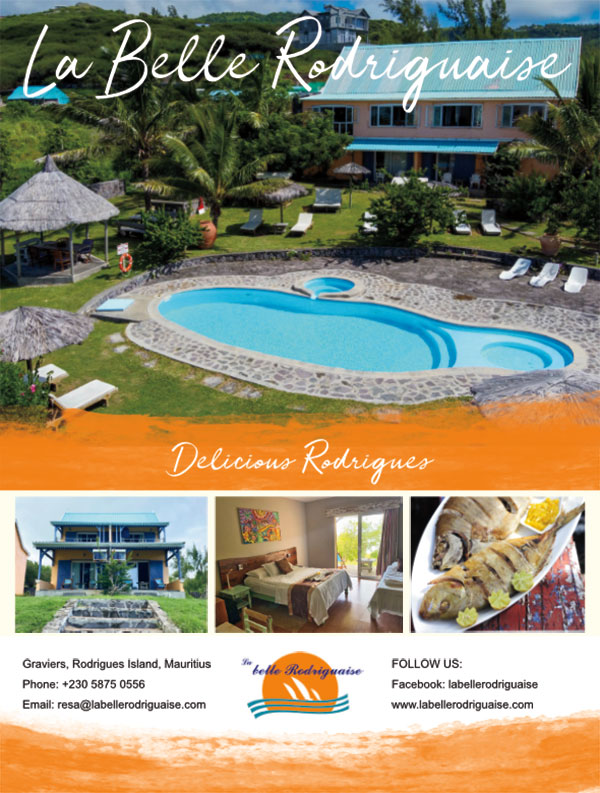
In our series, Island LIFE, Janet-Lynn Vorster, takes us 2,000 kilometres (1,243 mi) east of the South African coast to the tropical Indian Ocean island of Rodrigues, an autonomous outer island of Mauritius, 580 km (360 mi) to the west.
She introduces us to the beautiful nature as well as the local music and cuisines of the island followed by some practical information.
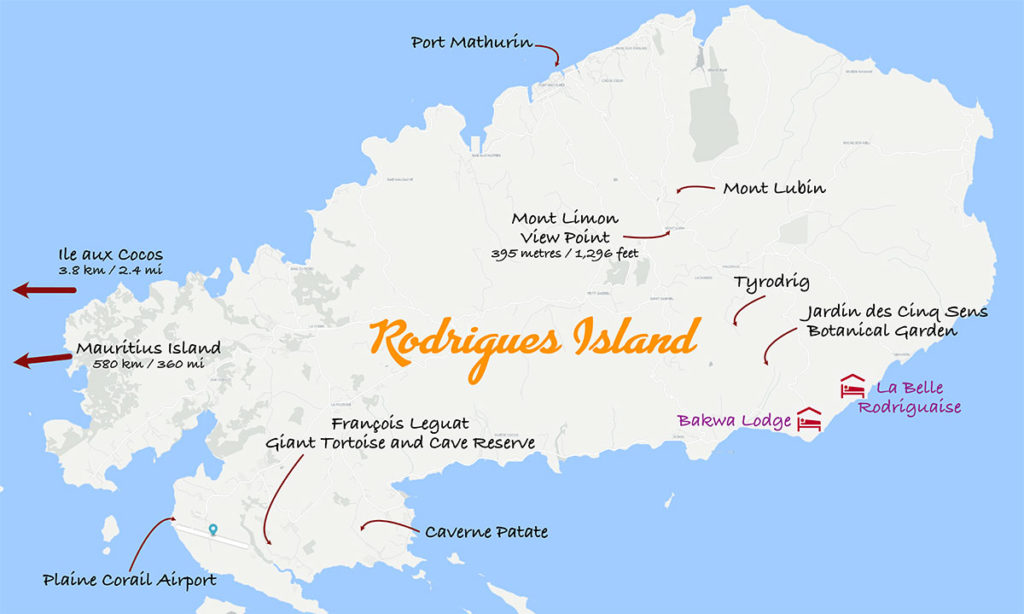
Table of Contents
Finding Rodrigues Island
Discovered by Arabs about 1,000 years ago, the uninhabited island was only named in 1507 after the Portuguese explorer Diego Rodrigues.
Originally colonized by the French, African slaves were brought to Rodrigues to help farm with crops and animals. In 1809 British troops took possession of Rodrigues, and the French settlers were evacuated, leaving their slaves behind. These slaves were the ancestors of the present population, together with a few Chinese and Indo-Mauritian immigrants.
Mauritius is the gateway to Rodrigues, which lies 553 kilometres (344 miles) east of Mauritius
The islands of Mauritius, Reunion and Rodrigues form the Mascarene Archipelago. Rodrigues is the youngest and smallest of the Mascarene Islands, formed about 1.5 million years ago.
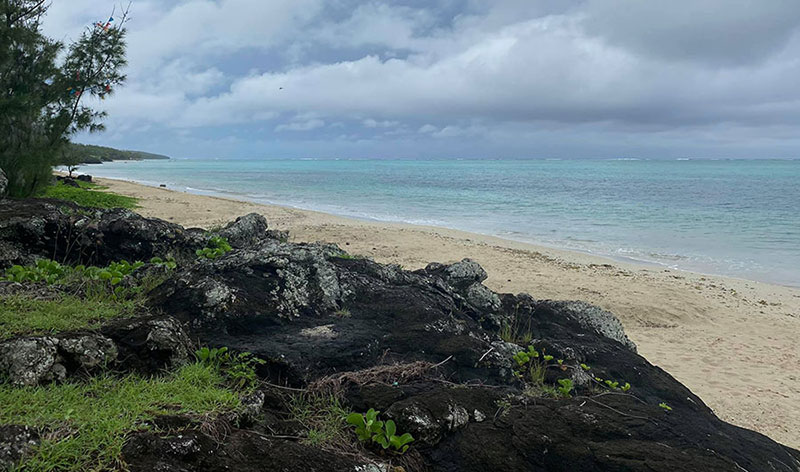
Although a dependency of Mauritius, Rodrigues was granted autonomy in December 2002.
When taking photos on Rodrigues Island, the camera will pin it as “Somewhere in the Indian Ocean”. To get such a response in this high-tech age, Rodrigues must literally be an island in the middle of nowhere, forgotten, or undetected.
But let us narrow it down a little more. To reach Rodrigues, one must go via the island of Mauritius, or Île Maurice as the locals call it.
Rodrigues is a 1.5-hour flight from Mauritius. A ferry departing from Port Louis, the capital of Mauritius, is the slower alternative. Two vessels make regular voyages to and from the island, carrying cargo as well as passengers.
Whichever choice you make, an unexpected destination awaits.

The pulse of the local Creole people beats slowly and strongly. 90% of Rodriguans are Creoles, descendants of Malagasy and African slaves.
Serenity and authenticity await you. The silence and peacefulness in Rodrigues are in stark contrast to everyday life elsewhere.
The island is unpretentious. Shiny objects, unless they can be used for fishing, have little meaning here. Life is rich and abundant in its quality and simplicity.
Immerse yourself in the local culture, slow down to a crawl and view the world through half-open sleepy eyes from a hammock, or float in the crystal-clear gently undulating ocean as it lulls you into oblivion.
It is nothing like its modern, up-market sister, Mauritius.
Rodrigues is the secret getaway and rendezvous of Mauritians. Here they come to play, rest, and break away from their everyday lives.
A Tiny Island Paradise
This charming little island measures a mere 18 kilometres (11 miles) in length and eight kilometres (5 miles) at its widest point, covering an area of 104 square kilometres (40 square miles).
Rodrigues is a hilly, volcanic island, surrounded by coral reefs and a cyan-blue lagoon. The surrounding lagoon has so many hues, that pinpointing a colour does it no justice. Hazy ocean vistas merge seamlessly with the sky.

The coastline consists of coves, creeks, and cliffs. Beaches, mostly deserted except for the odd local, fisherman, cow or goat wandering along the shore, are on the eastern side of the island.
The wide lagoon, twice the size of the island, stretches to the distant coral reefs that form a safe barricade around the island. The lagoon is so shallow in places during low tide, that walking is preferable to swimming which is best done at high tide. This calm lagoon is Rodrigues’s greatest natural asset.
Most people agree that three to five days is about as much quietness as they can manage at a stretch in Rodrigues. This provides enough time to experience the island
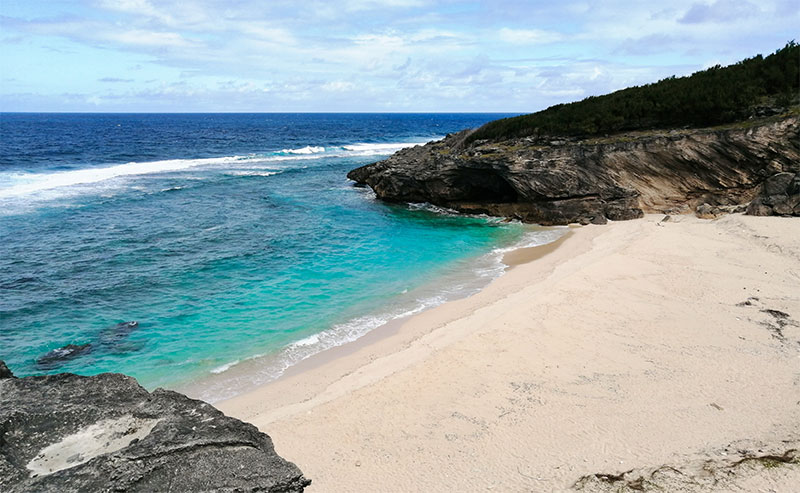
However, I love the remoteness, so I disagree. If you love off-the-beaten-track places, hiking, diving, fishing, sailing or other leisurely outdoor activities, then a longer stay is highly advised.
Rodrigues is peaceful and beautiful which makes it a perfect honeymoon destination.
The Rodriguan Lifestyle
Time has stood still on Rodrigues. It is easily 20 to 30 years behind Mauritius.
Rodrigues could be described as a farm at the seaside with a few homes and hotels dotted around the countryside, the ocean never far away.
People live simply. Houses are built to withstand cyclones, not for their architectural design. Outdoor structures are rustic, built for simple and easy reconstruction. Interior decoration and local art often incorporate natural materials found on the island or in the ocean.
Most Rodriguans are farmers living off the land and the sea. They cultivate corn, sweet potatoes, tropical fruits, and other vegetables. Rodriguan onions are famous and exported to Mauritius.
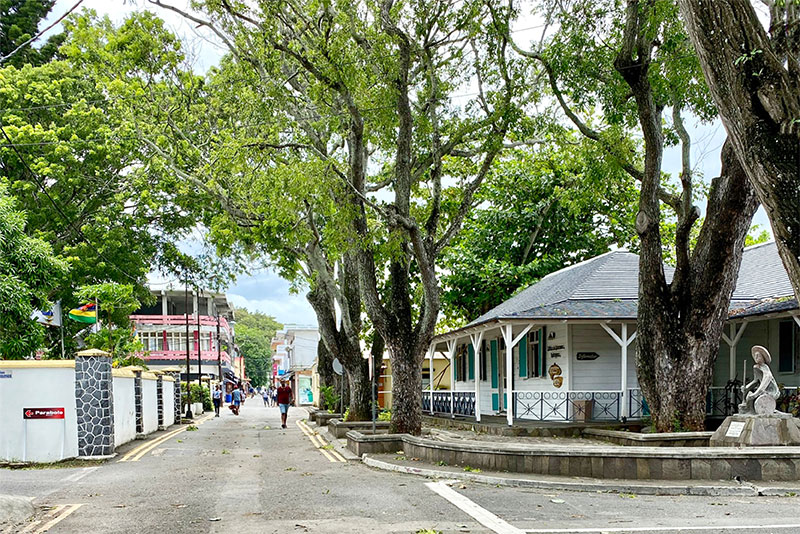
A typical day for most Rodriguans begins at daybreak, tending to chores and livestock. Cattle are seen tethered or grazing alongside the roads and against the hills. Goats may roam around; pigs are kept mostly in pens and chickens cluck around the houses.
Once daily chores are done and the sun rides high, the rest of their day seems a little like a long Mexican siesta. The day culminates with family dinner.
If tides and weather are favourable, they may tend to their boats or go fishing. Children are taught to fish from a young age.
Early to bed and early to rise is the secret to longevity in Rodrigues. Diseases linked to modern fast-paced lifestyles are virtually non-existent.
By nine in the evening, the island is fast asleep. Good luck finding anywhere to visit, even in a hotel, beyond this hour. Vibey nightlife is not par for the course. On Sundays everything is closed, and church services are well-attended.
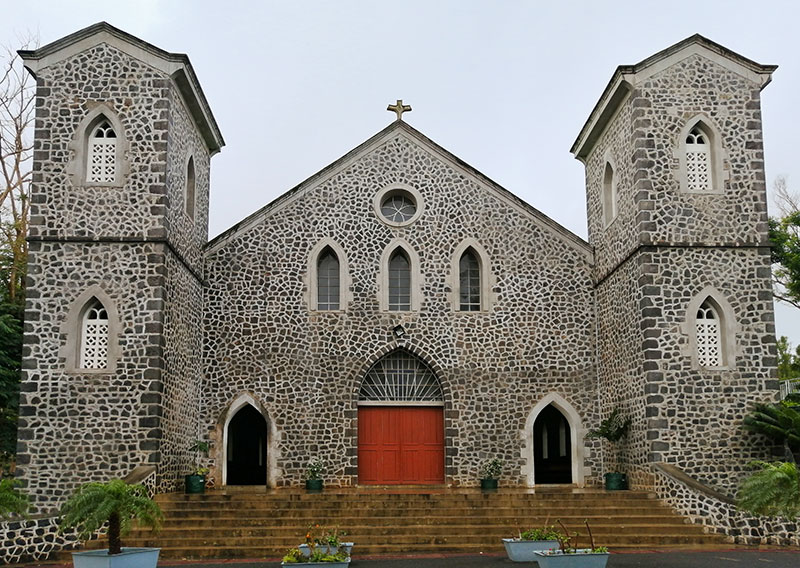
Crime is negligible. It seems the local prison deals mostly with the odd case of livestock theft. Drugs are non-existent on the island, and clean living is the norm.
Rodrigues has a lovely culture of old-worldly values. Family is very important to Rodriguans and having 12 children is quite normal. Courting rituals in Rodrigues are very traditional, including a specific sequence and dress code. The suitor’s hat plays a vital role, so do ask for the full story from a local.
Local handcrafts like basket weaving and other household items are very popular with tourists. Bottling chillies and other condiments is a Rodriguan tradition. These cottage industries, together with farming, fishing and eco-friendly tourism make up the main economic activities on the island.
A few locals work as teachers, policemen, tour guides, drivers, hotel staff or in a few other necessary occupations. Generally, though, there is little scope in Rodrigues for an ambitious, highly skilled or educated career. Children attend school on the island, but a university or college must be attended abroad in countries like Mauritius, France, the UK, or Australia.
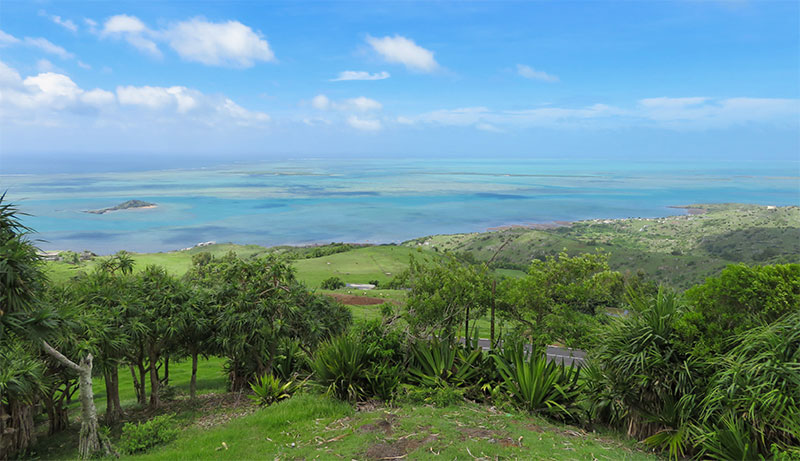
Land in Rodrigues is 90% state-owned. Rodriguans generally all have much the same standard of living and don’t need wordly things to live an abundant life.
There are no snakes or poisonous creatures on the island, and all spiders are harmless.
Meet the locals, and go with the slow flow of the Creole lifestyle and culture. This pleases them greatly.
Kindness, integrity, and simplicity abound. In Rodrigues it is customary to call in a favour if help is required. Not being able to imagine a single crisis in Rodrigues except for a cyclone, I found help might be requested with anything from an emergency with a cow or wife giving birth and not being able to get kids to school on time, to emergency repairs on homes, or fishing nets or boats after cyclone damage.
When requesting help but not receiving it, they apparently do not get angry, but are not obliged to return the favour in the future. However, help is generally provided as they are inter-dependent, and they quietly look for opportunities to return favours.
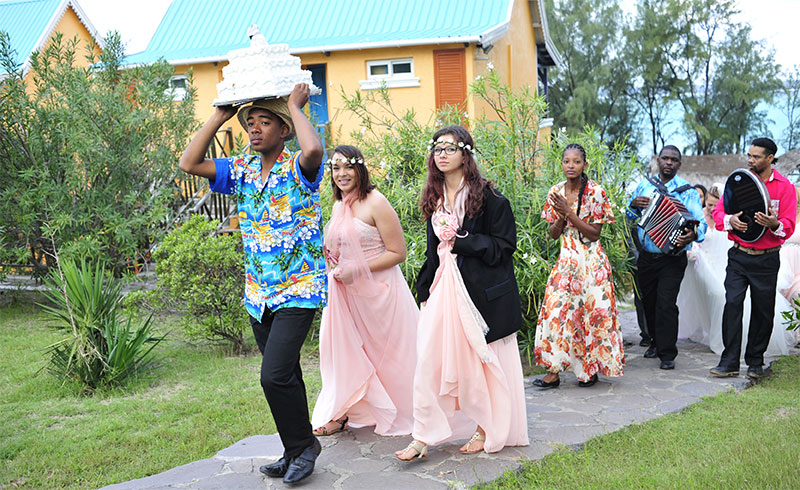
Local Cuisine
Rodrigues jealously guards its authentic Creole culture and island traditions. Forget about fast food franchises. They do not exist in Rodrigues. Food on the island is mostly Creole. Hotels may incorporate a touch of European, Indian, and Chinese, but a local flair is always detectable.
Rodriguans pride themselves on supporting local farmers, and favour fresh local ingredients. Importing from or via Mauritius is very costly, so this is a last resort. Organic compost and manure are used. Pesticides are too expensive to import. As a result, their crops are organic and bursting with flavour. Beef is grass fed.

Rodriguans will serve all kinds of meat, but fish and seafood are local specialities. Octopus from the lagoon is widely served in a variety of ways. Local fruit includes pineapples, mango, dragon fruit, papaya, and bananas. Coconut is widely used. Chilli paste and chutneys made with mango, tamarind, star fruit and other fruits are usually served with meals.
Rougaille is one of the island’s national dishes along with Pain d’Epices and Rougaille Saucisse.
Rougaille is a red, spicy tomato sauce, made from ripe tomatoes, onion, fresh thyme, ginger, garlic, curry and coriander leaves, oil for sautéing and salt to taste. Chillies may be added for heat. Rougaille is used as a base for meat, chicken, fish, or octopus, or added as a topping to rice or a filling in a roti. To Rodriguans, rougaille smacks of home and Mama.
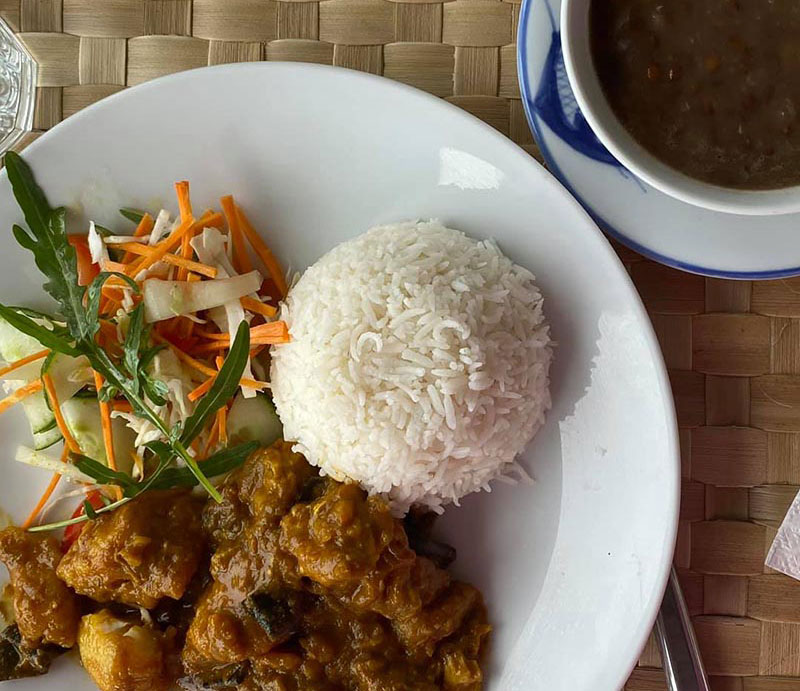
Pain d’Epices is a quick French cake or bread, made from rye flour, honey and spices like ginger, star anise and cinnamon.
Rougaille Saucisse is sausages added to the traditional rougaille. There are two types of local pork sausages. The Creole sun-dried sausage is both sweet and salty.
The fresh fruits and vegetables in Rodrigues make it easy to eat vegetarian or vegan. I found both hotels we stayed in very accommodating with dietary requests.
Locally produced beer and rum are potent and relatively cheap. Anything imported, such as wine, is very expensive.
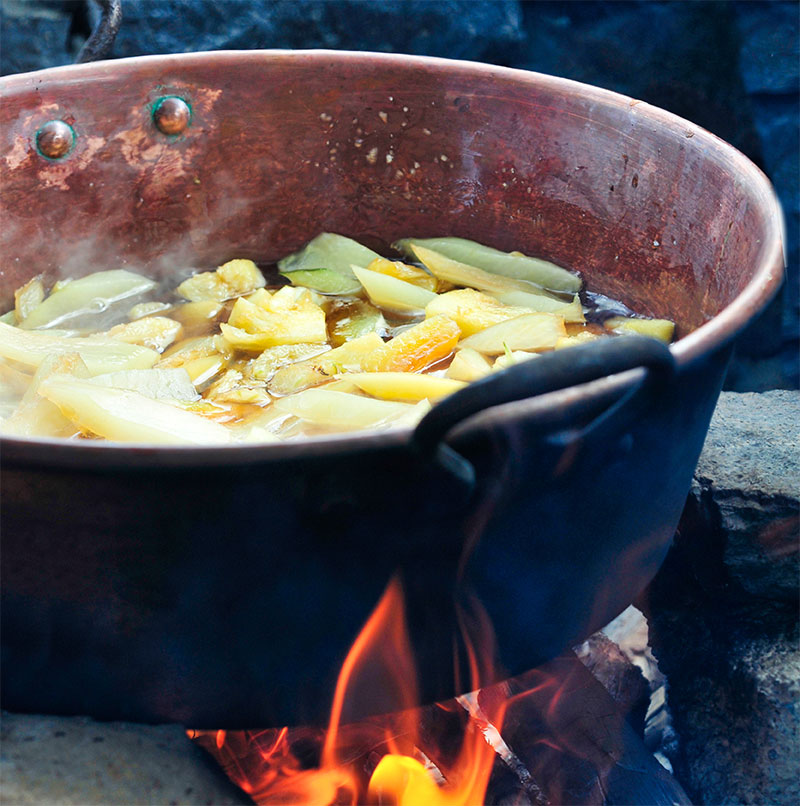
Lemons are used abundantly, and go well with fish, meat, and salads. The local homemade lemon drink is very refreshing. I loved it. I was always thirsty in the heat and humidity, so I could have downed it by the jugful.
Rodrigues’ honey is world-renowned and of exceptionally high quality since farmers here do not use pesticides.
La Belle Rodriguaise: local cuisine with a Creole soul. To purchase an authentic Rodriguan culinary book, entitled “Les Délices de Rodrigues”, stay over at the La Belle Rodriguaise guesthouse. Author and legendary cook, Françoise Baptiste, has created comfortable and affordable accommodation right by the sea.
We spent two delightful nights at this comfortable and affordable two-star establishment. Originally owners of a smaller guesthouse, Françoise and husband Laval Baptiste fell in love with this guesthouse and the tourist industry and built La Belle from scratch to include 12 rooms.
On arrival, La Belle resembles a farm with a beach.
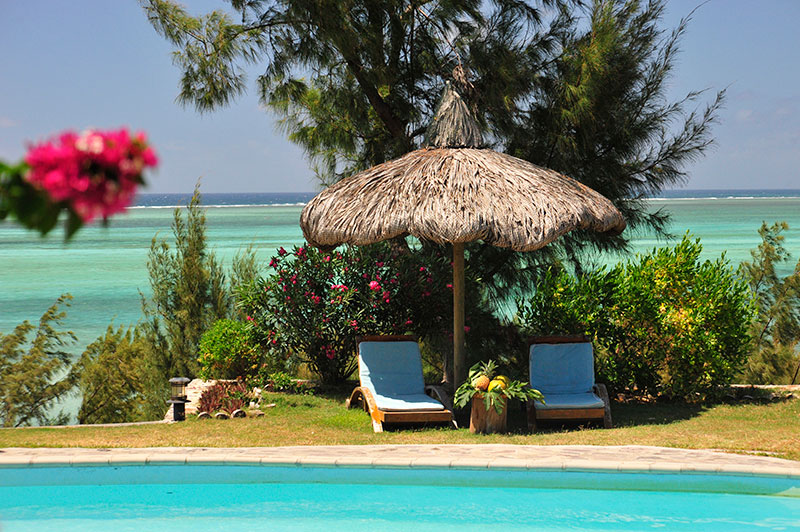
The air-conditioned rooms are very comfortable. All have ocean views. Big bathrooms with roomy showers, a kettle, hair dryer, small fridge and room service are included. Laval has installed solar water geysers and photovoltaics to generate electricity. Rooms are equipped with satellite television, but at La Belle looking out over the ocean from the veranda is preferable by far.
There is no Wi-Fi in the rooms. Free Wi-Fi is available in reception. The signal is weak, so don’t bother too much with the internet. Rather meet other tourists at the bar or in the shared lounge and socialise over breakfast or during La Belle’s well-loved communal “family affair” three-course dinner. Lunch can be pre-arranged by request.
Loyal “La Belle families” worldwide return whenever they can. This is your Creole family away from home, you just haven’t met them yet.
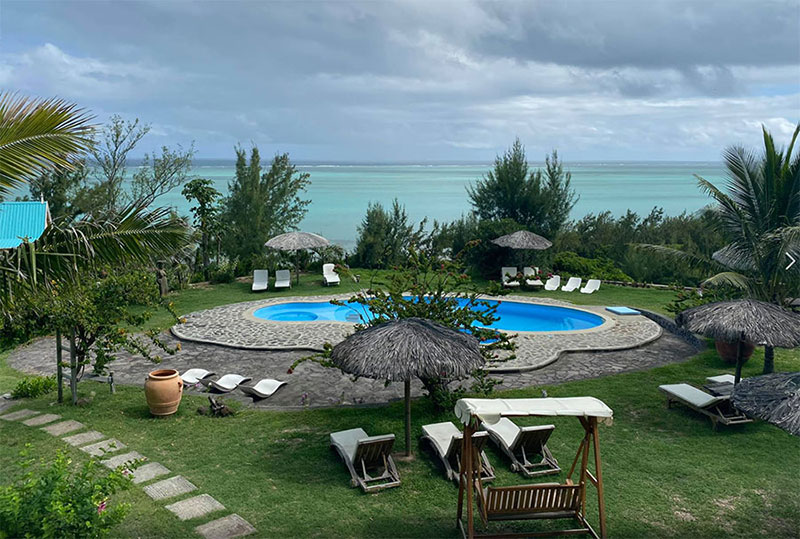
Music and Dance of Rodrigues
Rodriguan séga dancing is not the same as Mauritian séga dancing. Rodriguan music is quite unexpected, so attending an evening of séga dancing with local musicians comes highly recommended.
Rodriguan traditional music is a fusion of musical backgrounds from Africa, Madagascar, and Europe. The most ancient style is the séga tambour, and one fine day, much to the delight of musicians, séga tamboer “married” a strange mélange of old-fashioned music used for the Czech polka, Russian quadrille, European waltz, Polish mazurka, and Scottish reel.
The biggest surprise for me was the leading role the accordion plays in Rodriguan music. The accordion is also part of Afrikaans folk music (boeremusiek) in my home country, South Africa.
In Rodrigues, the accordion is played at traditional balls where the tradition of “ranne zaricot” on a Sunday afternoon is very popular. A dried bean is baked into a cake. Whoever finds the bean in his slice of cake is crowned king or queen of the ball.
Rodriguan musical instruments are rustic, including the accordion, maravanne (rattle), moutia (hand drum), ravanne (goatskin drum), tambourine, congas and bongos, sitar, cowbell, triangle and the bobre (a long bow, made of wood with a vegetable fibre string, with a calabash acting as a resonator, played by striking the string with a stick).
I accredit Dominique Audibert, manager of Bakwa Lodge, with my education in Rodriguan music and séga dancing. He treated us to a night out to experience these traditions.
Bakwa Lodge was the Traveller’s Choice award winner in 2019.
For an exclusive boutique-style eco-lodge, Bakwa Lodge is the perfect choice. It provides simple understated luxury accommodation.

Dominique has an exceptional eye for detail, and the lodge is well maintained and managed. Chatting to Dominique about Rodrigues is a delight. Staff and waiters are well-trained, and service is of a high standard.
Breakfasts in the light, bright dining area are delicious. Dinner includes three courses, each course individually plated and made with fresh seasonal local ingredients. Dominique singles out the tuna steak and octopus curry as favourites among many delicious dishes.
The lodge comprises six suites and a large beachfront villa. Rooms are spacious, louvre shutters are perfect for leaving the doors open at night, and rooms are fitted with both ceiling fans and air-conditioning. Bathrooms have both indoor and outdoor showers, with an interleading door.
Wooden decks overlooking the ocean and hammocks under the trees provide the perfect place to unwind. The private beach adds to the charm.
Offering quality linen with meticulous detail to every aspect, the “virtual visit” tab on Bakwa Lodge’s website will show you what words cannot describe.
Wi-Fi is available in the reception and restaurant areas.
Bakwa Lodge is the perfect blend of island life and luxury.
Top 5 Places to Visit
1. Marché de Port Mathurin
The Saturday market in Port Mathurin is a must-visit, partly because it is the only market in Rodrigues, and partly because no holiday is complete without a visit to this market to experience the local culture.
Local honey, jam, fruit tourte (cake), fruits, vegetables, beans, pickles, lemons, spices, dried fish and octopus, handcrafted baskets, hats, bags, and trays are on offer here.
A Mauritian lady I met at the market says she never goes anywhere without her basket of books. She comes to Rodrigues specifically to buy baskets, as she reckons they are the best and sturdiest in the world.
2. Giant Tortoise and Cave Reserve
In 2006, the François Leguat Giant Tortoise and Cave Reserve was established on Rodrigues. This nature reserve covers an area of 20 hectares (49 acres) and includes over 110,000 endemic and native plants as well as the giant tortoises.
Rodrigues Island had the highest known density of giant tortoises in historic times. The two extinct endemic tortoise species, the Rodrigues domed tortoise (Cylindraspis peltastes) and the Rodrigues giant saddleback tortoise (Cylindraspis vosmaeri) were a vital part of the ecosystem. By 1795 they were extinct. Sailors captured and took them onto their ships for food. Tortoises can live on very little water, a very appealing quality for sailors.
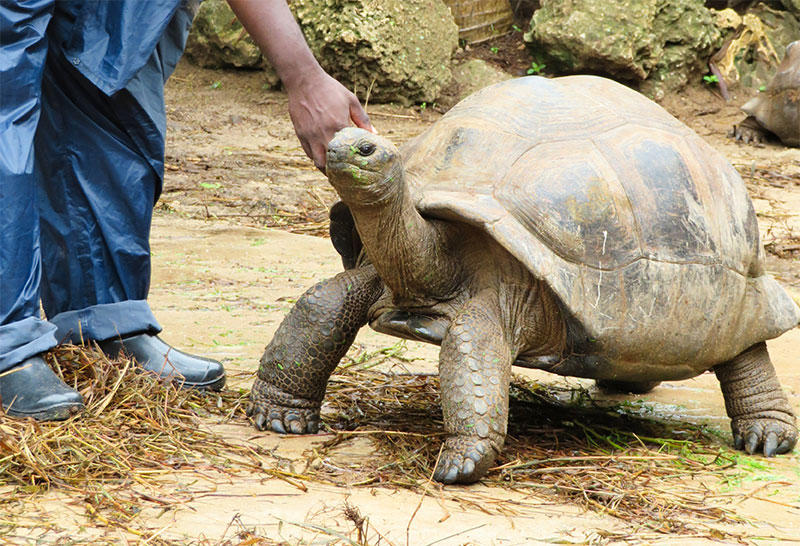
Not only are the endemic giant tortoises extinct, but the solitaire bird too. The solitaire is to Rodrigues as the dodo is to Mauritius. The dodo is an extinct flightless bird that was endemic to Mauritius. Unlike the dodo, though, the solitaire was described as “delightfully beautiful and delightfully edible”.
There are over 2,500 tortoises in the reserve today. The radiated tortoises are one of the most beautiful in the world, their shells covered with a very distinctive brilliant yellow pattern radiating from the centre of each plate.
You may glimpse the rare Rodrigues fruit bat or opt for a guided tour of the magnificent caves. There are eleven caves. The largest, Grand Caverne, is 500 metres (1,640 feet) in length.
With the help of an Australian cave consultant, Grande Caverne has been equipped with state-of-the-art walkways, steps, and eco-friendly lighting illuminating stalactites and stalagmites formed over thousands of years.
3. Ile aux Cocos
Ile aux Cocos is an island four kilometres (2.5 miles) to the west of Rodrigues, covered with coconut palms and casuarina trees with a long sandy beach. This natural bird sanctuary is only accessible by boat.
A permit must be obtained to visit, and this is generally arranged by the tour operator. Lunch can be included to make a day of it.
Indulge in bird watching, including the noddy, lesser noddy and fairy tern. In addition to sunbathing and swimming, marine life can be viewed in the clear water on the boat ride across
4. Caverne Patate
Created by tectonic plate movement, Caverne Patate is an underground tunnel 18 metres (59 feet) below sea level. This tunnel is over one kilometre (0.6 mile) long and lies beneath a coral belt in the southwest region. Guided visits are arranged several times a day.
Rent a helmet and a battery-operated electric lantern for safety and wear solid walking shoes as the cave floor is slippery in places. An experienced guide will walk you through a wonderworld of stalagmites and stalactites of all shapes and sizes.
5. Botanical gardens
Rodrigues Jardin des 5 Sens translates as “Rodrigues’ garden of the five senses”. This tropical garden of almost 4,000 m² (43,055 square feet) has an array of medicinal, aromatic and endemic plants and fruit trees as well as fountains.
Take part in a guided tour and experience the gardens through all five senses, including tasting edible flowers and infusions, or attend one of the educational workshops.
Visit the shop and have lunch at the restaurant.
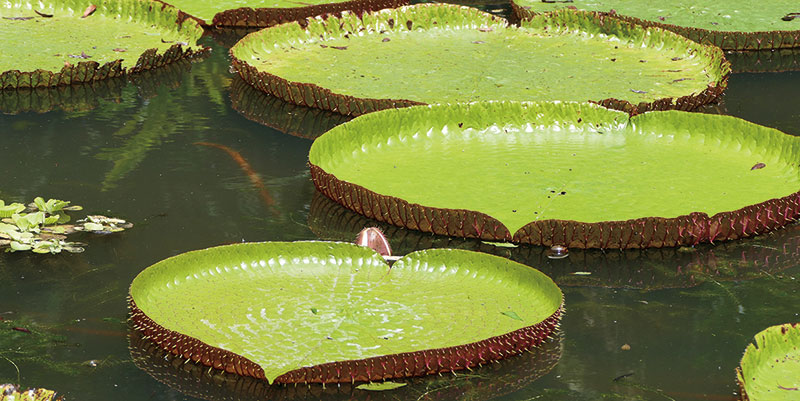
Looking for an Adrenalin Rush?
Apart from hiking, and there are many places to hike, here are a few ideas to keep the blood and adrenaline pumping both in and out of the water.
1. Tyrodrig
Zip slide from pillar to post on the fourth longest zip-line in the world at Cascade Pistache. Failure to launch is not an option.
Experienced staff will launch and catch you at each end of the lines. Fly free as a bird and get a panoramic view of the gorges below and ocean in the distance.
Thrill-seekers will be delighted to have a few other challenging activities here, such as crossing the precarious suspension bridge, or bridge swinging by diving or jumping off the suspension bridge above the ravine. This pendulum swing is a little like a bungee jump, except you are attached by a harness around your body and not by your feet.
2. Water sports
From gentle snorkelling over the coral reefs to scuba diving in deeper waters, there is an activity for every level of expertise to experience a little of King Neptune’s subaquatic world.
The warm shallow waters of the lagoon come alive with colourful fish, green turtles, rays, and 280 types of beautiful corals. With no industrial pollution in Rodrigues, the waters are crystal clear.
A kitesurf centre at Ebony Mourouk Hotel offers tuition and training by fully trained instructors for both beginners or more advanced kite surfers.
There is an annual international kitesurfing festival where both amateurs and professionals from all over the world gather to compete in the large 200 km² (77 square miles) lagoon.
There is, they say, no better place on earth to kitesurf.
Most beachfront hotels offer various water sports such as sedate pedal boats, kayaking, dinghy sailing and speedboat rides.
3. Big game exotic sportfishing
Rodrigues is one of the best “multi-fishing” destinations in the world. Surrounded by a large continental plateau, it has numerous spots perfect for jigging and bait fishing.
Experience the roar of the inboard Caterpillar engines and the scream of tightly stretched line when a marlin or other gamefish strikes. For any fisherman this is the ultimate pulse-racing experience.
You can expect to encounter a variety of monster-sized fish such as dogtooth tunas, groupers, Wahoos, giant trevallies, marlins, dorados, yellowfin tunas, sailfish (fastest fish in the ocean), sharks, and others, but this list should already be too tempting to ignore.
Rodrigues’ location is strategic for big game fishing. The reef plays a pivotal role and the sea is bountiful. It is little wonder that the island holds many world records for fishing.
Rodrigues has two ideal fishing periods: from October to June, and from December to April.
A Stopover in Mauritius
Spend a few days in Mauritius before and after your visit to Rodrigues. This alleviates the stress of rushing to connecting flights. Delays are unpredictable, particularly in cyclone season.
In 2019, both the July and December issues of GlobeRovers Magazine contain articles on Mauritius, which will entice you to spend time on this idyllic island. Enjoy this opportunity to experience two very different islands near one another.

Mauritius has been recognised as a safe destination regarding Covid-19 by the World Travel & Tourism Council (WTTC). Mauritius is spoilt for choice regarding accommodation.
We stayed at Mystik in Mont Choisy during January 2020, and I can highly recommend it. The rooms are very comfortable. Air-conditioning and Wi-Fi keep you cool and connected.
Mystik, a three-star boutique hotel on the sea front at the southern end of Mont Choisy Beach, is ideally situated on the bus route between Grand Baie and Trou aux Biches, and only 40 minutes by bus from Port Louis.

There is a little rocky beach directly in front of the hotel, but the Mont Choisy swimming beach is only five-minutes away.
Day packages are available for non-residents who may want to lounge around the pool, have lunch or dinner, or end the day drinking cocktails in the Sky Bar as the sun sets over the bay.
Most impressive is Mystik’s innovative flexible card system. With this card Mystik becomes a little like home: eat what you feel like when you want it. Exchange a large meal for smaller meals or eat elsewhere and bank a meal for another day. Breakfast is a buffet, lunch and dinner are a-la-carte, with snack meals available in the restaurant between meals.
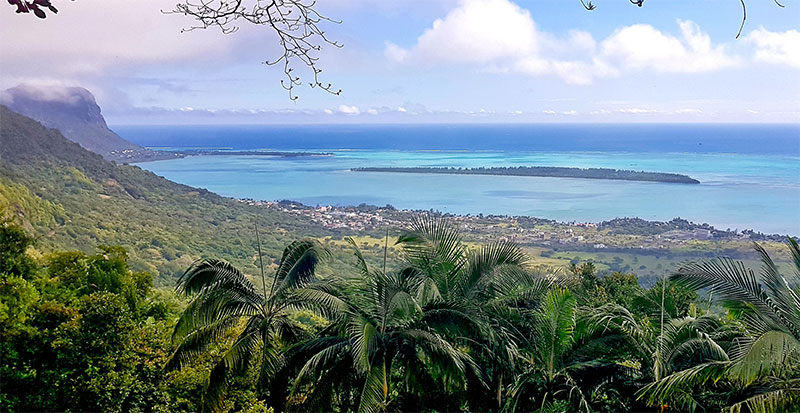
Packages can include activities around the island or spa treatments. Do not hesitate to approach Mystik’s friendly staff to discuss your requirements and budget. Being a smaller boutique hotel, Mystik is more personal, and one of the packages will no doubt be a perfect fit.
Mystik loves guests to feel free and take the liberty to plan their stay to fit their plans.
Since writing the previous two-part article on Mauritius, I have discovered a brand-new experience worth mentioning: Mauritius Metro Rail.
Roads in Mauritius are narrow and congested during peak hour traffic, so renting a car is not the most relaxing way to get around the island.
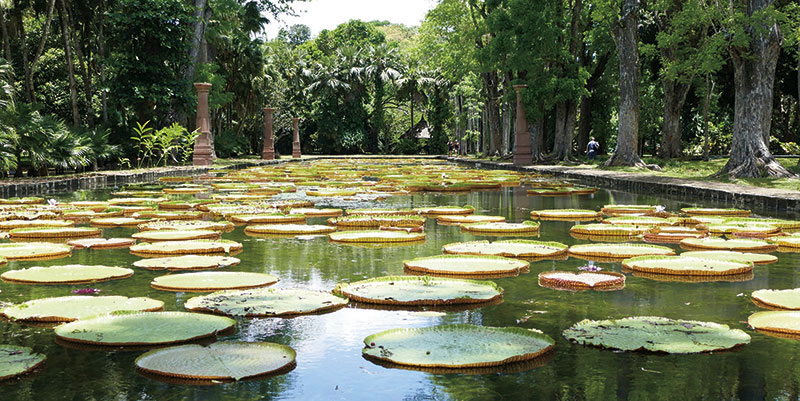
Frequent buses are an affordable way to travel to certain places but have their limits for sightseeing and will only stop at the bus stops. Shared taxis take the same routes as the buses. Offering these taxis the same fee as you would pay on the bus will usually get you a quick lift, and a shared taxi will upload or drop off passengers anywhere en-route, including between bus stops. Private taxis are recommended for day trips.
But (drum roll and tah-dah!) the Metro Express adds an exciting new way to travel between Immigration Square in Port Louis and the town of Curepipe, a distance of 26 kilometers (16 miles). The speed of these 45.4 metres (149 feet) long low-floor tramway vehicles is 35-80 km/h (22-50 mph), and they can carry up to 422 passengers.

Phase One has been operational since January 10th, 2020. This first phase stretches between Port Louis and Rose Hill, a 12.6 kilometre (8 mile) journey with 5 intermediate stops along the way.
Phase Two is scheduled to open in September 2021 and will extend the tramway from Rose Hill south to Curepipe.
The 26-km-long (16 mile) light rail public transport system will comprise of 19 stations once fully completed.
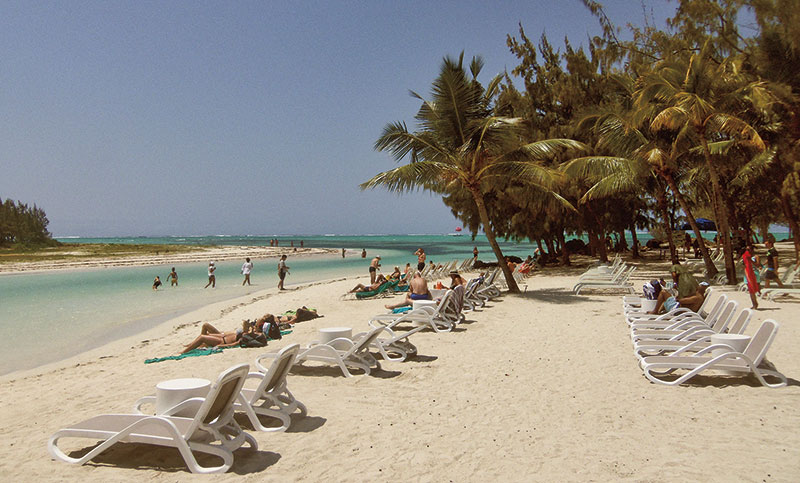
☛ Read more: Posts about nearby Mauritius
Practical Information
The Climate
I visited Rodrigues in the latter part of January 2020, which was in cyclone season. January was perhaps not the smartest time to visit, as many activities were closed for obvious reasons, and a boat trip was out of the question.
However, days in between bouts of wind and torrential rain were very hot, and humidity was at 100%. Most tourists I met in Rodrigues loved the heat, especially those who came to escape the harsh European winter.
The locals are so acclimatised they barely break a sweat.
Rodrigues has a tropical maritime climate with trade winds blowing all year round. The temperatures vary between 28°C (82°F) and 35°C (95°F) during summer, which coincides with the cyclonic season (November to April) and between 18°C (64°F) and 27°C (81°F) in winter.
The climate is overall hotter and drier than in Mauritius, and Rodrigues is hit by cyclones more often than Mauritius.
August is the coolest month, February the wettest, and September and October the driest.
Travelling Around the Island
A small network of paved roads connects the airport to the main towns. Secondary roads, rather steep in places, are mostly unpaved with rocky sections and potholes, driveable preferably in a 4 x 4 vehicle.
The upside to this is that vehicles generally avoid the badly eroded roads to many of the coastal hotels, which makes for a tranquil get-away without traffic noises. To fetch and drop off tourists though, drivers will patiently crawl along these terrible unpaved roads, navigating as best they can through the bad sections.
Always arrange sightseeing trips early the day before. Nothing happens at the last minute in Rodrigues, and I mean truly nothing. A lack of prior planning on your part will not constitute a crisis to a Rodriguan, who will simply withdraw and refuse to engage when pushed or rushed. Nothing you do or say will infuse any urgency. Respect their way of doing things and your own stress levels will drop accordingly.
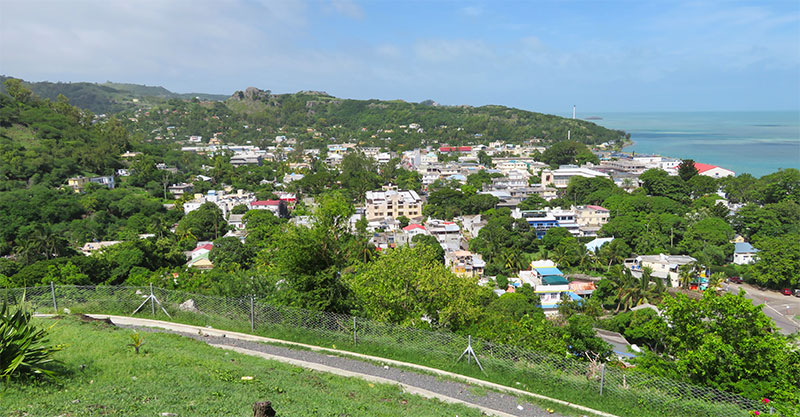
The entire island can be seen in one day. Naturally, to spend any length of time anywhere, returning the following day is both advisable and easily arranged.
Local buses are cheap and safe. They are slow and run on island time. Locals love their scooters. Both cars and scooters can be hired. Traffic jams are unheard of on the island and road rage is non-existent.
Where to Stay
Tourism is still in its infancy in Rodrigues, with only a handful of hotels and guest houses. Do not compare them to hotels elsewhere or expect five-star accommodation.
I stayed at both La Belle Rodriguaise and Bakwa Lodge. La Belle leaned more towards a homely, family type of environment, and Bakwa Lodge was more exclusive. Both were lovely. I was very grateful that both had air conditioning.
Wi-Fi across the island is painfully slow or non-existent. Use water sparingly.
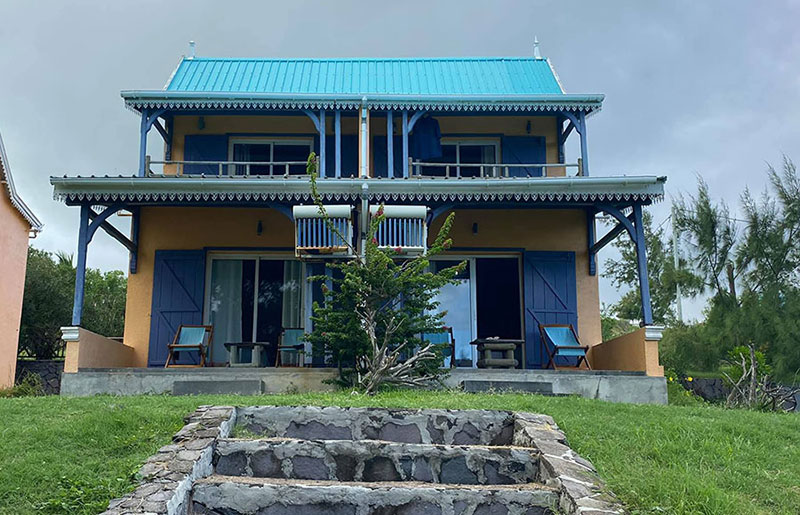
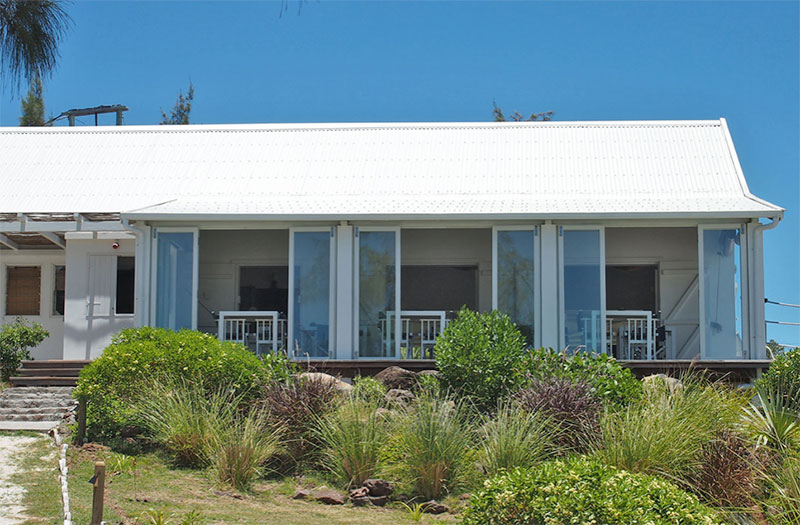
Where to Shop
Apart from a few specialised shops, most shops on the island are general dealers, dotted alongside the road in unexpected places. Each general dealer en-route was judged by our driver on a scale of excellence based on their range of fishing gear.
A few informal outdoor shops can be found around the island, but Port Mathurin is the best place to go shopping.
The town is quite deserted, except for odd pedestrians strolling leisurely down the middle of the street. Every now and again a group will part to allow a slow-driving car to pass.
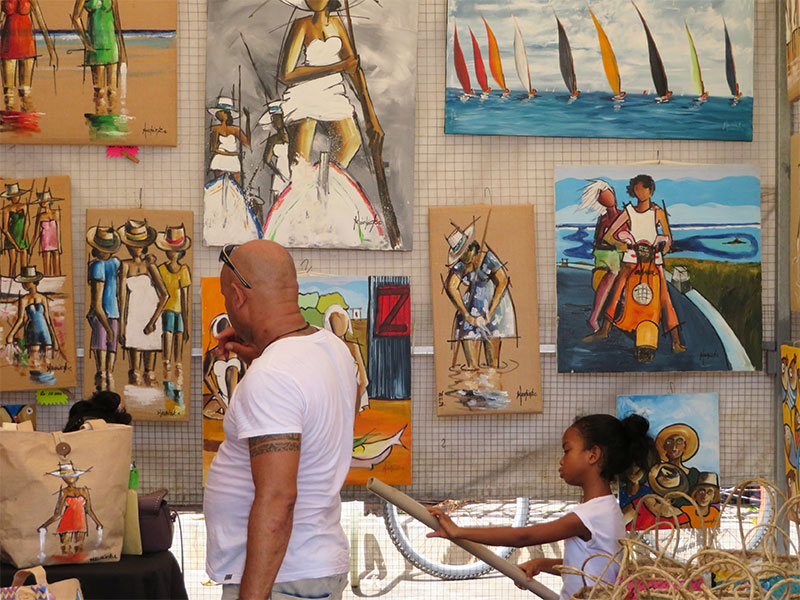

☛ Read more: Posts about Mauritius



Janet-Lynn is a numerologist by profession, and journalist, editor and photographer by hobby. She is the proud mother of three grown children and granny to three grandchildren.

